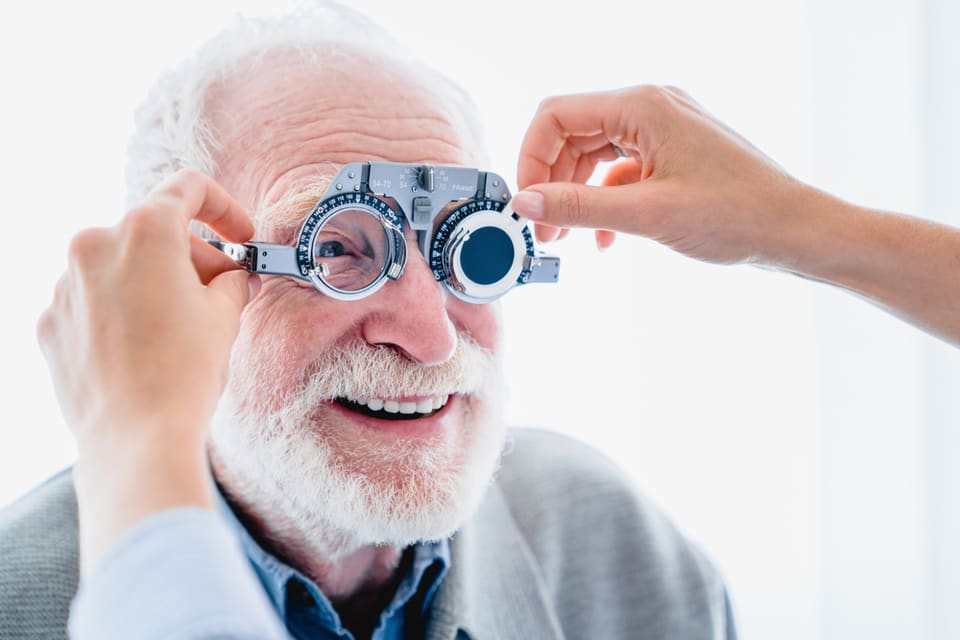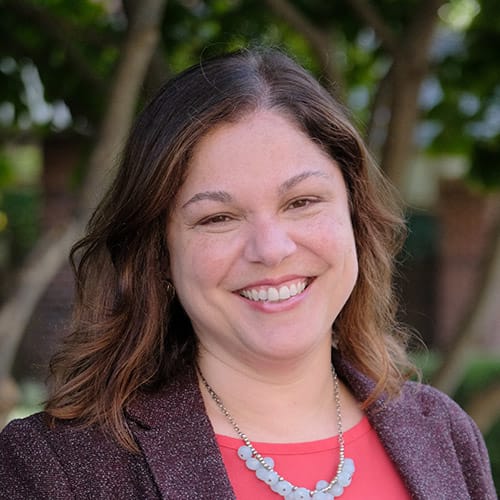
Early Glaucoma Symptoms and Treatment

Glaucoma is a leading cause of blindness worldwide. Although anyone can get glaucoma, older adults are at a higher risk of developing it.
Let our care assessment guide you
Our free tool provides options, advice, and next steps based on your unique situation.
What is glaucoma?
Glaucoma is a group of diseases that cause increased pressure in the eye, resulting in damage to the optic nerve that can lead to permanent vision loss. There are several different types of glaucoma, and some of them may be caused by other medical conditions, according to the National Eye Institute.
Glaucoma affects about 3 million people in the U.S., but only half of those are aware they have it, according to the Glaucoma Research Foundation. This is because early signs and symptoms of glaucoma often go unnoticed.
Early diagnosis and treatment are important to slow the progression of glaucoma, which can affect one or both eyes. Read on to learn what the first signs of glaucoma are and what steps you can take to prevent irreversible vision loss.
What is the first sign of glaucoma?
There are several different types of glaucoma, but the most common type — open-angle glaucoma — usually doesn’t cause any signs, symptoms, or pain. This is why glaucoma is commonly known as “the sneak thief of sight.”
It’s critical to get regular eye exams by an ophthalmologist, an eye doctor who specializes in treating eye diseases and performing surgeries. This is especially important if you’re in a glaucoma high-risk group.
Signs and symptoms of open-angle glaucoma
In open-angle glaucoma, the eye doesn’t drain fluid properly. Over time, eye pressure increases and damages the optic nerve.
This type of glaucoma happens gradually, which is why it usually doesn’t cause any pain or vision changes at first. Vision loss associated with open-angle glaucoma begins with peripheral (side) vision loss, but those who have it may not notice it until the damage to the optic nerve is significant.
Signs and symptoms of acute angle-closure glaucoma
Acute angle-closure glaucoma, also called closed-angle glaucoma or narrow-angle glaucoma, occurs when the iris blocks the eye’s drainage angle, making the eye pressure rise very quickly. Acute angle-closure glaucoma is especially common in older adults, particularly those who have untreated cataracts.

Let our care assessment guide you
Our free tool provides options, advice, and next steps based on your unique situation.
Some early signs and symptoms of acute angle-closure glaucoma in the elderly include the following:
- Blurred vision that happens suddenly
- Severe eye pain, often described as an intense, throbbing pain, along with reddening of the eye
- Headache around the eyes or the forehead
- Nausea and vomiting accompanied by severe eye pain
- Seeing halos around lights, such as rainbow-colored circles, or unusual sensitivity to lights
Acute angle-closure glaucoma is a medical emergency that can damage the optic nerve and cause permanent vision loss if it’s not treated promptly. Go to the emergency room or see an ophthalmologist right away if you or a loved one experience these signs and symptoms.
Angle-closure glaucoma can also progress gradually, in which case it is called chronic rather than acute. This type of glaucoma, called chronic angle-closure glaucoma, usually doesn’t cause symptoms until the damage to the optic nerve is severe or until an acute event occurs.
Are older adults at risk for glaucoma?
Anyone can get glaucoma, but seniors are at a higher risk. Other risk factors for glaucoma include the following:
- Adults over age 60 are six times more likely to develop glaucoma.
- Hereditary history of open-angle glaucoma increases its risk.
- Diabetes doubles the risk of developing glaucoma.
- High blood pressure generally increases glaucoma risk.
- High dosages ofsteroid inhalers to control severe asthma can increase risk.
- Previous eye surgeries or injuries, especially blunt trauma, increases risk.
- Severe nearsightedness increases risk.
How to prevent glaucoma-related vision loss in seniors
Early detection and ongoing monitoring of eye health can help lower the risk of glaucoma-related vision loss.
Understand the risk factors for glaucoma
It’s important to think about many aspects of life history to fully understand the risk for this condition: Do you have a family history of glaucoma? Is diabetes or high blood pressure an issue? Has there ever been trauma to the eye?
Race can also affect risk: African Americans over age 40 are six to eight times more likely to develop glaucoma, and Hispanics and Asians are at an increased risk of developing open-angle glaucoma. These risks are associated with slight differences in the anatomy of the eye. African Americans and Hispanics, for example, have been found to have thinner corneas, which is known to increase the risk of glaucoma.
Eye anatomy, namely corneal thickness and optic nerve appearance indicate risk for development of glaucoma. Conditions such as retinal detachment, eye tumors and eye inflammations may also induce glaucoma. Some studies suggest that high amounts of nearsightedness may also be a risk factor for the development of glaucoma.
Even if you or your loved one are not in a high-risk group, it’s important for everyone to have a comprehensive dilated eye screening by age 40. Early diagnosis and treatment of glaucoma can prevent the progression of the disease and permanent vision loss.
Manage diabetes, blood pressure, and diet
Take care to manage diabetes and monitor blood pressure to keep such health conditions under control. Don’t skip doctor’s appointments, and be sure to take medications as prescribed. Eating a healthy diet, staying physically active, and not smoking can also help lower risk.

Talk with a Senior Living Advisor
Our advisors help 300,000 families each year find the right senior care for their loved ones.
Manage and treat glaucoma
After a glaucoma diagnosis, it’s important to slow the progression of the disease by reducing risk factors as much as possible and taking medications as prescribed by the doctor. Set reminders for follow-up appointments and exams to help prevent any additional vision loss.
Glaucoma-related vision loss can affect quality of life and the ability to perform basic activities of daily living, such as walking, reading, or driving. If your aging loved one has glaucoma and suffers from vision loss, consider whether home care or a move to an assisted living community can help them maintain their independence and happiness.
Sources:
Boyd, K. (2021, September 21). What is glaucoma? Symptoms, causes, diagnosis, treatment. American Academy of Ophthalmology.
Centers for Disease Control and Prevention. (2020, November 24). Don’t let glaucoma steal your sight!
Fazio, D. (2019, September 18).What are the symptoms of glaucoma? Glaucoma Research Foundation.
National Eye Institute. (2021, September 10). Types of glaucoma.
Ou, Y. (2021, August 18). How glaucoma affects different ethnic groups. Bright Focus Foundation.
Senior living options in all states
The information contained on this page is for informational purposes only and is not intended to constitute medical, legal or financial advice or create a professional relationship between A Place for Mom and the reader. Always seek the advice of your health care provider, attorney or financial advisor with respect to any particular matter, and do not act or refrain from acting on the basis of anything you have read on this site. Links to third-party websites are only for the convenience of the reader; A Place for Mom does not endorse the contents of the third-party sites.
Make the best senior care decision
Make the best senior care decision